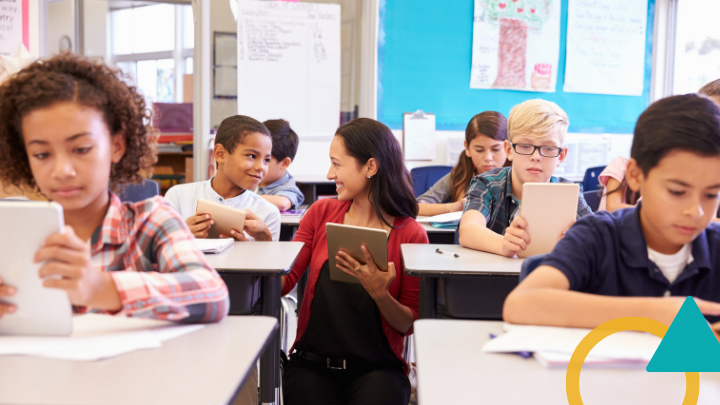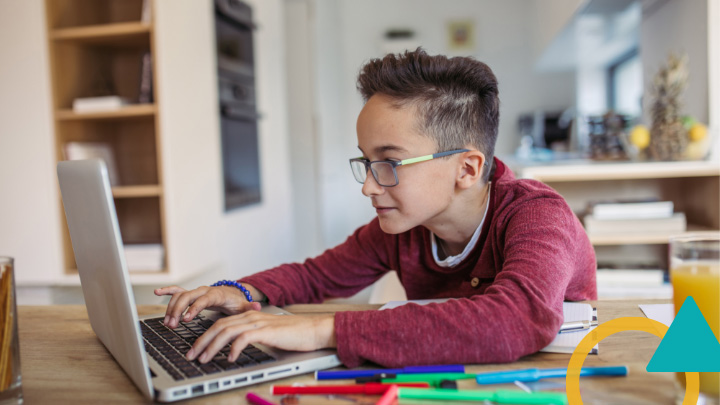As a result of the COVID-19 pandemic, many educators are now teaching from home. Teachers care deeply about providing their students with an excellent education, but the situation comes with a set of deep challenges: finding it hard to focus, replying to dozens of messages a day from parents or students who are all new to distance learning as well, and trying to cope with increased anxiety about their students’ well-being and their own physical confinement.
As an instructional coach for BetterLesson who supports teachers and regularly works remotely, I am familiar with these wellness challenges. The National Wellness Institute’s 6 dimensions of wellness are physical, social, intellectual, spiritual, emotional, and occupational. We can take stock of our well-being in each dimension, and identify both where we would like to invest more energy, and how to do it. Each person’s priorities and practices will vary – but I will share with you some of mine.
Physical Well-Being
As a teacher, I was used to moving my body all day, every day. While teaching from home, I realized I am not at my best (physically or mentally) when I sit all day. I’m a runner, so I try to go for a run every other day. Other days, I’ll do an indoor workout— often some body weight squats and push-ups (from my knees, no shame here!)— or simply shake out my limbs for 10 seconds at a time. Some days, I just walk up and down my apartment building’s stairwell as I try not to touch the railing. If you prefer a guided workout, there are lots of YouTube channels or free apps that can help!
When I was teaching full time, I never hydrated well enough. That’s still true for me today, so I try to combine my movement breaks with my hydration efforts and regularly get up to refill my cup with water. To remind myself to do this, I start the day with 6 bracelets on one wrist and gradually move them over to the other wrist as I finish a new glass of water. I also like free apps like MyFitnessPal to track my water intake. For teachers worried about changes in their eating patterns, you can also track your food consumption in an app.
Social Well-Being
This is probably the most challenging dimension of well-being for me. I’m definitely an introvert, and I often say no to group virtual gatherings. At times like this, I feel like my preference to read a book by myself indicates there is something wrong with me. However, I have enjoyed work-related socializing like co-facilitating virtual workshops for teachers. Fellow introverts, we can choose whatever means of connection works for us! The important thing is to respect our own need for social connection, whether that’s a little or a lot. Extroverted teachers, for example, may want to take the opposite route and start a virtual book club over video chat!
Intellectual Well-Being
I’m a very goal-oriented person, so each year, I set a goal for the number of books I want to read. I track my progress on the Goodreads app, as part of their annual reading challenge. One hiccup in my plan to read more during the coronavirus quarantine is that my local library is closed. So, I rely on BookMooch, a site that lets you exchange books with other readers just for the cost of shipping. If I run out of books, I have found watching documentaries, doing online crossword puzzles, and watching old Jeopardy episodes on Hulu has kept my brain feeling nourished. I also love the podcasts: Cult of Pedagogy, Teaching While White, and Code Switch.
Spiritual Well-Being
Spiritual may mean religious, but it can also be more broadly defined as relating to one’s “sense of purpose” or “meaning in life” (National Wellness Institute). During this pandemic, I have had to do some soul searching about what I’m doing here. I’ve had to step back and ask myself what I can offer in this moment, and remind myself that the struggles I’m facing are strengthening my character. I often refer to VIA’s 24 values or “character strengths,” which I used with my high school students, to identify which value I’m being challenged to strengthen during this time. I try to talk to myself as if I were talking to a student: with empathy, but also with encouragement to adopt a lens of resilience or a growth mindset. I’m surviving. I’m strengthening parts of myself that haven’t been pushed in this way before.
Emotional Well-Being
I also teach myself to use the same self-regulation strategies or mindfulness techniques I have invited my students to use. Lately, my favorite breathing technique has been: smell the flower, blow the bubbles (inhale as if smelling a flower in one hand, exhale as if using a bubble wand in the other hand). When I’m having a serious bout of anxiety, I like to use Stop Think Breathe, which is a free app that guides you through breathing exercises. (There’s an adult version, but I love the simplicity of the kids’ version. It makes me feel like I’m in my own classroom again!) I try to monitor my emotions and energy level as I support my current college students in the transition to remote learning. I’ve decided to set boundaries around how and when I will respond to student questions. I find I’m most effective and empathetic to questions when I check my email only once a day, and offer the option to sign up for virtual 1:1 support during two, 1-hour blocks of time during the week.
Occupational Well-Being
As educators, we want more than anything to support our students to learn and achieve success, which can feel difficult in this time of school closures. To support teachers in making this shift effectively, BetterLesson has created a helpful document on Distance Learning. I’ve used this resource to help me plan how to support my current students during this challenging time. I’ve also tried to synthesize my ideas, research, and experiences in regular blog posts, which helps me feel like I’m supporting others in the field to be their best teacher selves.
The biggest thing I’ve learned in my time teaching from home is that I am most successful when I make my wellness a routine. Many teachers track student progress with colorful trackers made with paper and markers. You can do this for your personal wellness goals too. It feels really good to take note of my progress, no matter how small, each day!
Just as we create and put plans in place to ensure our students are well, we can do the same for ourselves as educators. Research indicates teacher burnout predicts student academic outcomes and is correlated with lower levels of student motivation and increased student stress (Lever, Mathis, & Mayworm, 2017). Taking care of our own well-being enables us to be more effective as we support our students, even from a distance. For more ideas on how you can support yourself (and your students) to be well, browse other strategies in the Social-Emotional Learning domain.







